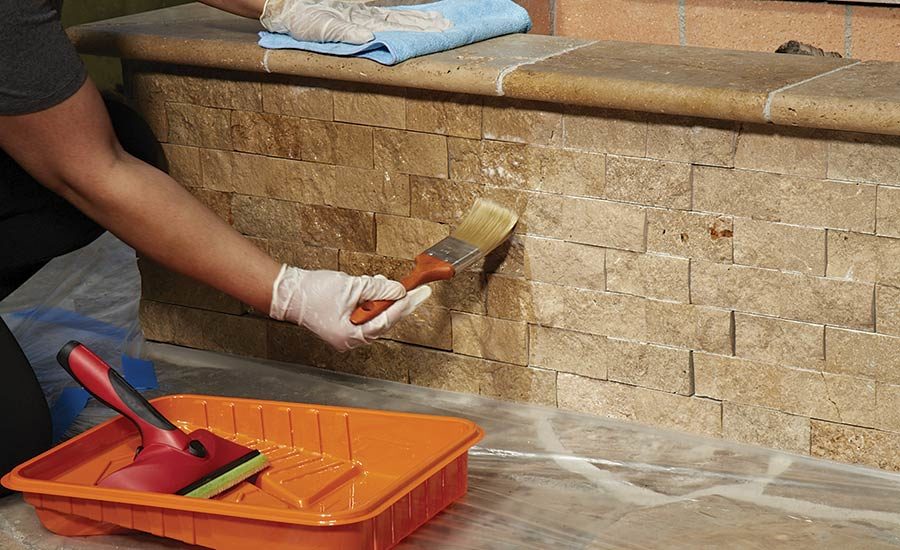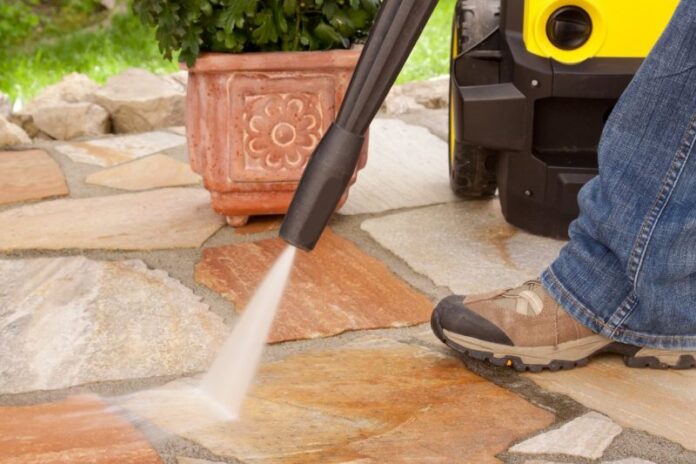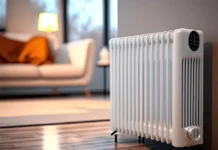Sure, there are some distinct disadvantages to natural stone flooring. It’s a rather expensive option. It’s a difficult installation, even with all the tools and the best tile cutting tools. The floor can be quite slippery (especially when wet), and falls can lead to serious injury.
But these natural stone tiles are just gorgeous, which makes them hard to resist. And you can make sure the natural stone flooring lasts for many decades to come, by taking care of it properly.
Basic Maintenance and Cleaning Rules for Natural Stone
Here’s a general overview on what you have to do to maintain your natural stone flooring.
Seal the Tiles Every 2 or 3 Years
This is one of the most important aspects of natural stone maintenance. Natural stone is actually semi-porous, and it’s likely to stain from spills. That’s why you need to seal the tiles regularly to prevent this from happening. You just need to make sure you do it every couple of years, and that you use the appropriate sealant that’s right for the type of stone you’re using.
Use Area Rugs and Non-Slip Mats
At the very least, the mats keep debris off the floor surface, protecting it from scratches. For countertop surfaces, try using placemats, trivets, and coasters. Try to place the mats and rugs right near the entrance of the room.
Blot Up Spills Immediately
You have to deal with the mess right away. Regardless of whether you’ve sealed the tiles, it pays to make sure you don’t give the spill the time to cause a stain.
Cleaning Procedure
First off, dust and mop the floors frequently. It’s best if you do this more than twice a week.
When you clean the floor surfaces, use some type of mild detergent. There are also some special soaps specifically designed for stone floors.
After washing and mopping the floor, thoroughly rinse and dry the surface, using clear, clean water.
What You Must Never Do
Natural stone flooring may seem tough and invulnerable, but it still has some weaknesses. To make sure you don’t inadvertently damage the flooring, here are some things you should never do:
Never Use Worn Vacuum Cleaners
These vacuum cleaners may have metal attachments that can damage the floor. Even the plastic attachments can do some damage. In fact, even the wheels can end up scratching the surface of the flooring.

Never Use Cleaners that Contain Acids
That means you don’t use tub & tile cleaners, grout cleaners, and bathroom cleaners. You should also avoid homemade cleaning solutions that contain lemon juice or vinegar. You really don’t want to use acid-based cleaners on natural stone flooring like onyx, travertine, limestone, and marble.
Never Use Abrasive Cleaners
These include soft cleansers and dry cleansers. They contain stuff that’ll just scratch the flooring surface.
Never Mix Chemicals Together
This is especially true when it comes to mixing bleach and ammonia. You just end up with toxic gas. Just don’t mix chemicals unless you bought a commercial product with very specific mixing instructions.
Special Tips and Recommendations
Some cleaning tips for natural stone will be for more specific circumstances.
For Floor Surfaces
- Use a clean and dry dust mop, to get rid of dirt and grit that can scratch the stone flooring surface.
- Go with clean, potable water for washing the surface, along with pH 7 (neutral) cleaners.
For Countertops
- Use warm water, along with a suitable cleaner. This can be stone soap, a few drops of a neutral cleaner, or even a mild dishwashing detergent. Just don’t use too much, or else you end up with streaks.
- Wipe down the countertop with a clean, soft cloth.
For Wet Areas (Including Bathroom)
- You can minimize soap scum by using a squeegee after each use.
- Use a non-acidic soap scum remover for best results.
- Every now and then, you can also use a solution of ammonia and water. Just make sure you have at least a gallon of water to go with each half-cup of ammonia. Don’t use this too often, however, as you’ll just dull the stone surface over time.
For Patio and Outdoor Pool Areas
- Flush with clear water.
- Use a mild bleach solution to get rid of moss or algae.
For Exterior Stone Spaces
- It’s true that these are often larger areas, which makes it rather impractical to do regular maintenance too frequently.
- But you should still do some periodic overall cleaning at least once a month, so you can get rid of accumulated pollutants.
For Removing Stains
- First, remove any loose debris.
- Don’t wipe the area. That will just spread out the spill and extend the stain damage.
- Instead, flush the stain area with some mild soap and plain water. Rinse several times.
- Use a soft cloth to dry the area thoroughly.
- Keep doing these same steps until you get rid of the stain completely.
- But if the stain is too stubborn, contact your local professional stone care specialist.
With all these tips, hopefully you’ll have a gorgeous natural stone flooring for many years to come!


















